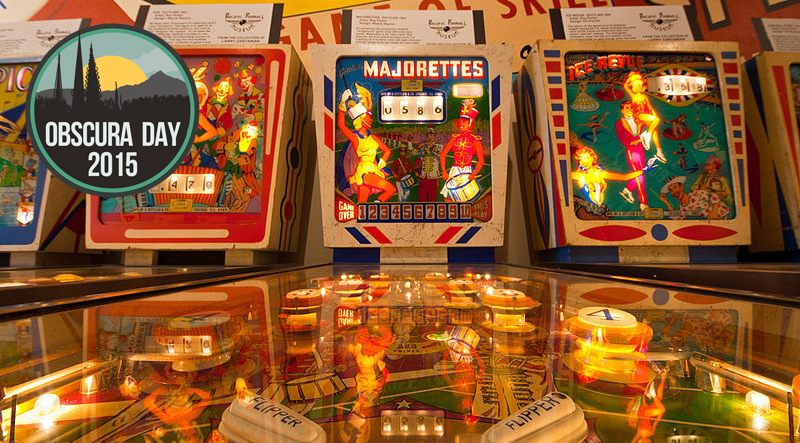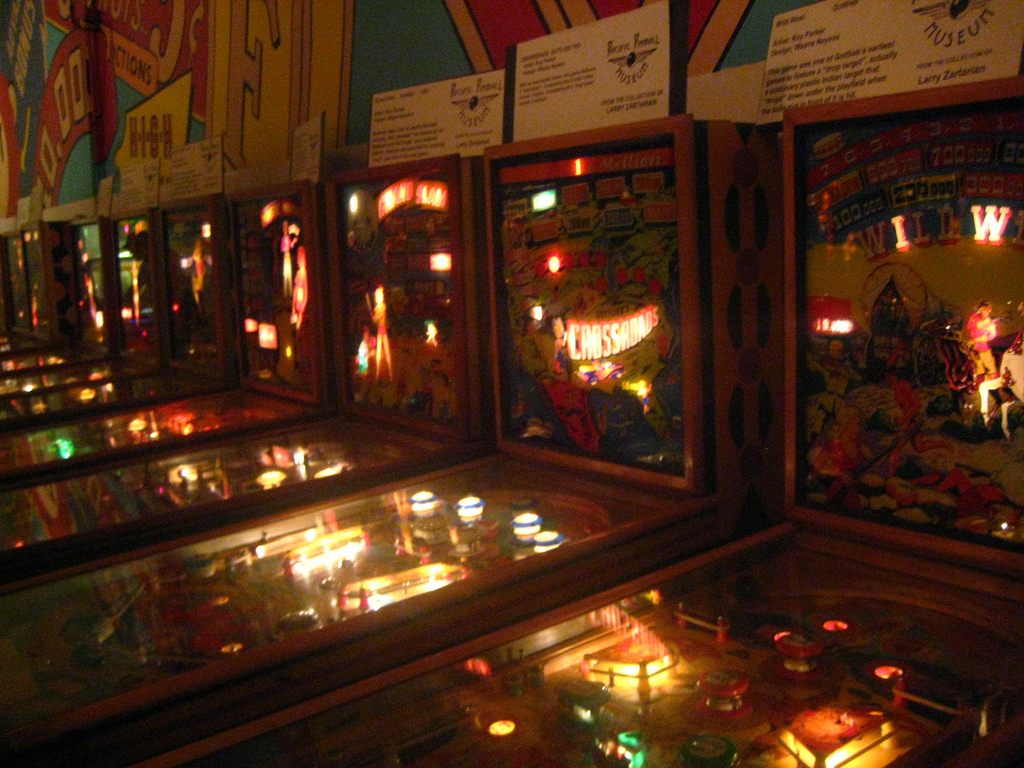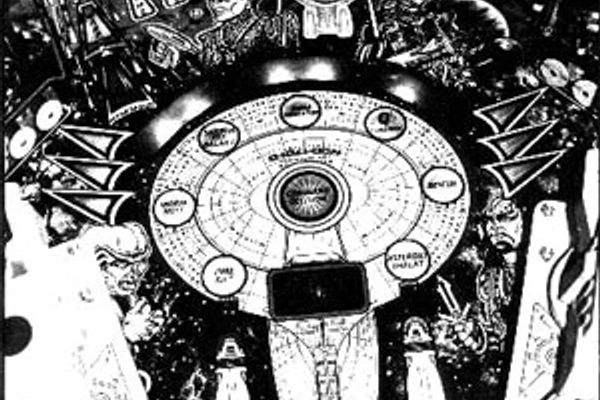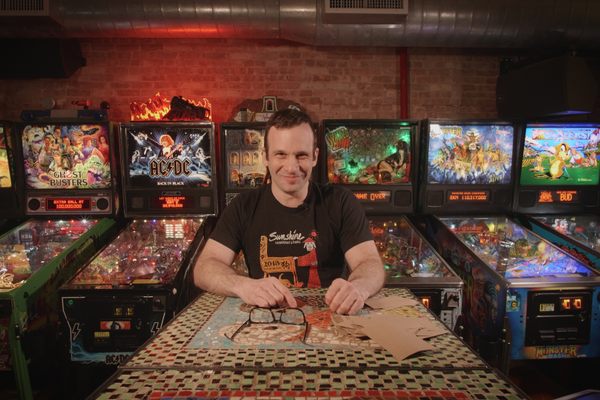The War on Pinball

On Obscura Day, May 30, join us for a private tour and play session at the Pacific Pinball Museum. (Photo by Michael Moore on Wikipedia)
In an age of Call of Duty, Grand Theft Auto, and fantasy games where sex is a major subquest, it seems hard to believe that pinball was once the scourge of America’s youth.
But in the 1940s and for decades after, the pinging, zinging, flicking, bumping game of pinball was considered by many to be both a moral and economic stain on America’s proud cultural quilt.
To get the story of the war on pinball we spoke with Michael Schiess, Executive Director of the Pacific Pinball Museum in Alameda, California, who has been collecting and repairing pinball machines, both modern and vintage, since 2001.
Descended from a table game known as Bagatelle, the first pinball machine was patented in 1871, after a plunger mechanism that rocketed the ball into the playing field was added to the game. By the 1930s, pinball machines were ubiquitous amusements in bars and taverns around the country, and were seen as “trade stimulators,” a boon to the bleak economy of the Great Depression.
Before the invention of flippers, which were not introduced until 1947, the launched ball would simply bounce off pins into whichever random hole it found on the field. Despite the random, uncontrollable nature of the game, people still placed wagers on the outcome of these games, and pinball soon gained a reputation as a gambling machine that catered to lowlifes. This reputation was bolstered by the fact that most of the machines came from Chicago, then a hub of mob activity, and the cash-based machines were easy targets for criminals.

On Obscura Day, May 30, join us for a private tour and play session at the Pacific Pinball Museum. (Photo: Kevin Wong on Flickr)
This gamified source of ill-gotten gain soon attracted the attention of crusading do-gooders who set out to put a stop to the pinball epidemic, eventually leading to the game being banned in a number of cities, most notably New York. Chief among the opponents of pinball was then Mayor of New York City, Fiorello La Guardia, who succeeded in passing a citywide ban on the machines in 1942 with the help of some nationalistic furor.
By 1942 [La Guardia] had been trying to ban pinball and a lot of illegal activities in New York. He was trying to clean up New York, so I think he was using anything he could get his hands on,” Schiess explains.
He got most of his ammo when Pearl Harbor was bombed. They needed materials and resources for the war effort, and pinball of course used wood, wire, metal, glass, all these resources that were required for the war. Once he had that ammunition, he was able to enact a law to make [pinball] illegal.
With La Guardia leading the charge to have the game banned and eliminated, places like Oakland, California and Chicago, where most of the machines were manufactured, followed suit and created laws banning or limiting the use of pinball machines. Even with the laws in place, the game was never completely eliminated. The new legal restrictions on the game quickly quashed the use of the machines as gambling tools, with many of the games being set up so that you could not “win” per se, but instead competed for the chance at an extra game.
Even as its more unsavory connection to gambling dissipated in the 1950s, the nationwide attitude towards pinball retained the finger-wagging tenor of a moral crusade. Newspaper articles were written and advertisements were created that denounced pinball as “taking lunch money from our kids,” as Schiess puts it. The arguments sounded remarkably similar to many of the alarmist arguments against video games that continue to be espoused even today.

On Obscura Day, May 30, join us for a private tour and play session at the Pacific Pinball Museum. (Photo by the rabbit on Flickr)
As the years passed, pinball machines continued to pop up around the country in various forms as the furor against them lessened and the laws and bans became more lax. Yet it was not until 1976 that the New York pinball ban was actually lifted.
“The way I understand it, some of the pinball manufacturers were lobbying to get the ban lifted, because people were playing pinball in New York,” says Schiess.
The canny lobbyists brought an actual pinball machine into a city council meeting, where the pinball historian Roger Sharpe gave a demonstration of how it worked:
“The ban was lifted when Roger Sharpe went in and did a Babe Ruth number where he called his shot, and then he launched his ball. This was after several attempts to prove to them that he could actually beat the machine,” Schiess explains. “But they weren’t buying it until he made that shot. As soon as he made it they took a vote and the ban was lifted. It was a big deal.
With a single, successfully landed flipper shot (and several back-up pinball machines on stand-by in case the main one malfunctioned), Sharpe proved to the city council, and the nation-at-large, that pinball was in fact a game of skill and not just a tool of iniquity for hoodlums and rock-and-rollers. After New York City lifted their official prohibition on the game, many other cities followed suit, and pinball quickly returned to prominence.
Pinball machines grew ever more complex in the decades that followed, with media-licensed machines becoming the norm, adding more and more digital bells and whistles in a losing race to compete with the rise of video games. Yet remnants of pinball’s days as the bad boy of amusements still remain. As Schiess tells it, pinball was still banned in Oakland right up until 2014. The law prohibiting it was rediscovered and abolished during research regarding an online gambling law.
By the late 2000s pinball had become a beloved, but increasingly rare amusement, with all but one of the major manufacturers (Stern being the remaining company) having gone out of business. The days when pinball was a symbol of gangsters and greasers were finished, only to be replaced by a warm nostalgia for the jangling tangibility of the cacophonous game.
On Obscura Day, May 30, join us for a private tour and play session at the Pacific Pinball Museum, which has a fine collection of vintage pinball machines.










Follow us on Twitter to get the latest on the world's hidden wonders.
Like us on Facebook to get the latest on the world's hidden wonders.
Follow us on Twitter Like us on Facebook